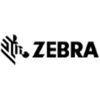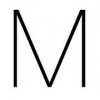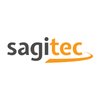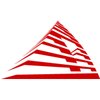Filter interviews by
Human Factors International Senior UX Designer Interview Questions and Answers
Human Factors International Senior UX Designer Interview Experiences
1 interview found
I applied via Company Website and was interviewed before Dec 2023. There were 4 interview rounds.
(3 Questions)
- Q1. Why you switched from Engineering to Design?
- Ans.
Passion for user-centered design and problem-solving led me to switch from Engineering to Design.
Realized my passion for user-centered design and problem-solving
Enjoyed creating intuitive and visually appealing solutions
Found more fulfillment in designing products that directly impact users
Transitioned skills from engineering to design, combining technical knowledge with creativity
- Q2. Tell me more about your last design project?
- Ans.
Redesigned a mobile app for a travel booking platform to improve user experience and increase conversions.
Conducted user research to identify pain points and user needs
Created wireframes and prototypes to test new design concepts
Collaborated with developers to ensure seamless implementation
Implemented user feedback to iterate on the design
- Q3. What are the challenges you face in your current project?
- Ans.
Some challenges in my current project include managing stakeholder expectations, balancing user needs with business goals, and limited resources.
Managing stakeholder expectations can be challenging as different stakeholders may have conflicting priorities.
Balancing user needs with business goals requires careful consideration to ensure the final product meets both sets of requirements.
Limited resources, such as time an...
They gave 14 questions - it was mix of textual, mcqs and design. Had 24 hours to work on that and submit it to HR.
(1 Question)
- Q1. Explain any 5 questions from the 14 questions you solved.
- Ans.
Explaining 5 questions solved in a UX design interview
Question 1: How do you approach user research? - I explained the importance of user research in understanding user needs and preferences.
Question 2: Can you give an example of a successful UX project you worked on? - I discussed a project where I improved user engagement and satisfaction through redesign.
Question 3: How do you prioritize features in a product design...
(1 Question)
- Q1. Offer and Salary Negotiation.
Top trending discussions






Interview questions from similar companies

Senior UX Designer Interview Questions & Answers
Human Factors Internationalposted on 1 Dec 2024
I applied via Company Website and was interviewed before Dec 2023. There were 4 interview rounds.
(3 Questions)
- Q1. Why you switched from Engineering to Design?
- Ans.
Passion for user-centered design and problem-solving led me to switch from Engineering to Design.
Realized my passion for user-centered design and problem-solving
Enjoyed creating intuitive and visually appealing solutions
Found more fulfillment in designing products that directly impact users
Transitioned skills from engineering to design, combining technical knowledge with creativity
- Q2. Tell me more about your last design project?
- Ans.
Redesigned a mobile app for a travel booking platform to improve user experience and increase conversions.
Conducted user research to identify pain points and user needs
Created wireframes and prototypes to test new design concepts
Collaborated with developers to ensure seamless implementation
Implemented user feedback to iterate on the design
- Q3. What are the challenges you face in your current project?
- Ans.
Some challenges in my current project include managing stakeholder expectations, balancing user needs with business goals, and limited resources.
Managing stakeholder expectations can be challenging as different stakeholders may have conflicting priorities.
Balancing user needs with business goals requires careful consideration to ensure the final product meets both sets of requirements.
Limited resources, such as time an...
They gave 14 questions - it was mix of textual, mcqs and design. Had 24 hours to work on that and submit it to HR.
(1 Question)
- Q1. Explain any 5 questions from the 14 questions you solved.
- Ans.
Explaining 5 questions solved in a UX design interview
Question 1: How do you approach user research? - I explained the importance of user research in understanding user needs and preferences.
Question 2: Can you give an example of a successful UX project you worked on? - I discussed a project where I improved user engagement and satisfaction through redesign.
Question 3: How do you prioritize features in a product design...
(1 Question)
- Q1. Offer and Salary Negotiation.
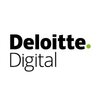
I applied via LinkedIn

(4 Questions)
- Q1. Go through your portfolio & share insights , user research process with defined outcome.
- Q2. Can you walk us through your design process ?
- Ans.
My design process involves research, ideation, prototyping, testing, and iteration to create user-centered solutions.
Research: Gather user insights, analyze competitors, and define project goals.
Ideation: Brainstorm and sketch out potential solutions.
Prototyping: Create interactive prototypes to visualize the design.
Testing: Conduct usability tests to gather feedback and iterate on the design.
Iteration: Refine the desi...
- Q3. How you overcome your challenges from any difficult project ?
- Q4. How to do you see your self as a Product manager
Interview Preparation Tips

I appeared for an interview in Sep 2024, where I was asked the following questions.
- Q1. What is the process of UX design?
- Ans.
The UX design process involves research, ideation, prototyping, testing, and iteration to create user-centered designs.
1. Research: Understand user needs through surveys and interviews. Example: Conducting user interviews to gather insights.
2. Define: Create user personas and scenarios to clarify target users. Example: Developing a persona for a busy professional.
3. Ideation: Brainstorm ideas and sketch initial concept...
- Q2. Portfolio showcasing
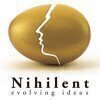
I appeared for an interview before Apr 2024, where I was asked the following questions.
- Q1. What is your typical design process start to end ?
- Ans.
My design process involves research, ideation, prototyping, testing, and iteration to create user-centered solutions.
1. Research: Conduct user interviews and surveys to understand needs. For example, interviewing patients to improve a health app.
2. Define: Create user personas and journey maps to clarify user goals and pain points.
3. Ideation: Brainstorm solutions through sketching and collaborative workshops with stak...
- Q2. How do you balance design goals and business goals?
- Ans.
Balancing design and business goals requires collaboration, user-centered focus, and iterative feedback to achieve mutual success.
Engage stakeholders early: Involve business leaders in the design process to align on objectives and expectations.
User research: Conduct user interviews and usability testing to ensure designs meet user needs while supporting business goals.
Iterative design: Use prototyping and feedback loop...
- Q3. What tool do you use for workflows
- Ans.
I primarily use Figma for creating workflows, as it allows for collaborative design and prototyping.
Figma enables real-time collaboration, making it easy for teams to work together on workflows.
It offers a variety of plugins that enhance workflow efficiency, such as automation tools.
Figma's prototyping features allow for interactive workflows, which help in user testing.
I also use Miro for brainstorming sessions and ma...
- Q4. How do you conduct user research
- Ans.
I conduct user research through various methods to gather insights and inform design decisions effectively.
Define research goals: Identify what you want to learn, e.g., user pain points in a specific feature.
Choose research methods: Use surveys for quantitative data or interviews for qualitative insights.
Recruit participants: Select users that represent your target audience, such as patients for a health app.
Conduct us...
- Q5. How do you conduct qualitative and quantitative research methods?
- Ans.
I utilize various qualitative and quantitative research methods to gather user insights and inform design decisions.
Qualitative methods include user interviews, where I ask open-ended questions to understand user motivations and pain points.
I conduct usability testing to observe how users interact with a product, gathering feedback on their experience.
Quantitative methods involve surveys with closed-ended questions to ...
Interview Preparation Tips

Interview Questionnaire
1 Question
- Q1. UX process, persona, create a persona based on a scenario, Card sorting, affordances. etc
Interview Preparation Tips

Senior UX Designer Interview Questions & Answers
Speridian Technologiesposted on 20 Nov 2023
I applied via Recruitment Consulltant and was interviewed before Nov 2022. There were 2 interview rounds.

(3 Questions)
- Q1. Only html questions
- Q2. What is css and what is html
- Ans.
HTML is a markup language used to create the structure of web pages, while CSS is a styling language used to design the appearance of web pages.
HTML stands for HyperText Markup Language and is used to create the structure of web pages.
CSS stands for Cascading Style Sheets and is used to design the appearance of web pages.
HTML uses tags to define elements like headings, paragraphs, images, and links.
CSS is used to style...
- Q3. What is metatag
- Ans.
A metatag is a snippet of HTML code that describes the content of a web page to search engines.
Metatags are placed in the head section of an HTML document.
They provide information about the webpage such as title, description, keywords, author, etc.
Search engines use metatags to understand the content of a webpage and display it in search results.
Example: Interview preparation tips for other job seekers - Please don't join UXD department in this company because the manager there name is Nishant kutty krishnan he is very bad he will fire everyone and give very less increment
Skills evaluated in this interview

I applied via Naukri.com and was interviewed before Sep 2022. There were 3 interview rounds.

(1 Question)
- Q1. What are the UX Principles and processes you follow?
- Ans.
I follow UX principles such as user-centered design, usability, accessibility, and consistency in my processes.
User-centered design: Focus on understanding user needs and preferences.
Usability: Ensure the product is easy to use and intuitive for the target audience.
Accessibility: Design with inclusivity in mind to accommodate users with disabilities.
Consistency: Maintain a cohesive and familiar experience across all to...
(1 Question)
- Q1. How do you define problem statements?
- Ans.
Problem statements define the specific issue or challenge that needs to be addressed.
Problem statements should be clear, concise, and specific.
They should focus on the root cause of the issue rather than symptoms.
They help guide the design process by outlining the problem to be solved.
Example: 'Users are having difficulty navigating the website due to unclear menu labels.'
Skills evaluated in this interview

Senior UX Designer Interview Questions & Answers
Tavant Technologiesposted on 23 Apr 2023
I applied via Naukri.com and was interviewed before Apr 2022. There were 2 interview rounds.
You have to create a prototype for a give scenerio based requirement.
(1 Question)
- Q1. There was pure technical round and with the final discussion on your given assignment.
Interview Preparation Tips

Senior UX Designer Interview Questions & Answers
Athenahealth Technologyposted on 12 Sep 2023
I applied via LinkedIn and was interviewed in Aug 2023. There were 4 interview rounds.

(2 Questions)
- Q1. Walkthrough your proudest project
- Q2. What were the most challenging and most rewarding parts of the project?
(2 Questions)
- Q1. Collaborative working session - design thinking round
- Q2. Design problem on healthcare sector
(1 Question)
- Q1. Cross collaboration round
Skills evaluated in this interview
Human Factors International Interview FAQs
Tell us how to improve this page.
Interview Questions for Popular Designations
- Graphic Designer Interview Questions
- Web Designer Interview Questions
- Senior Graphic Designer Interview Questions
- Product Designer Interview Questions
- Visual Designer Interview Questions
- UX and UI Designer Interview Questions
- Senior Product Designer Interview Questions
- Lead UI UX Designer Interview Questions
- Show more
Overall Interview Experience Rating
based on 1 interview experience
Difficulty level
Duration
Interview Questions from Similar Companies
Human Factors International Senior UX Designer Reviews and Ratings
based on 2 reviews
Rating in categories
|
Senior UX Designer
13
salaries
| ₹8 L/yr - ₹21.2 L/yr |
|
UX Designer
5
salaries
| ₹8.4 L/yr - ₹15.1 L/yr |
|
HR Manager
4
salaries
| ₹11 L/yr - ₹11 L/yr |
|
Accountant
4
salaries
| ₹4.6 L/yr - ₹8.2 L/yr |
|
Founder
3
salaries
| ₹30 L/yr - ₹30 L/yr |
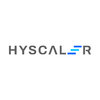
HyScaler
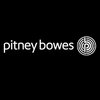
Pitney Bowes
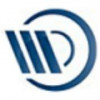
AvenData GmbH
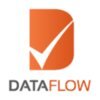
Dataflow Group
- Home >
- Interviews >
- Human Factors International Interview Questions



